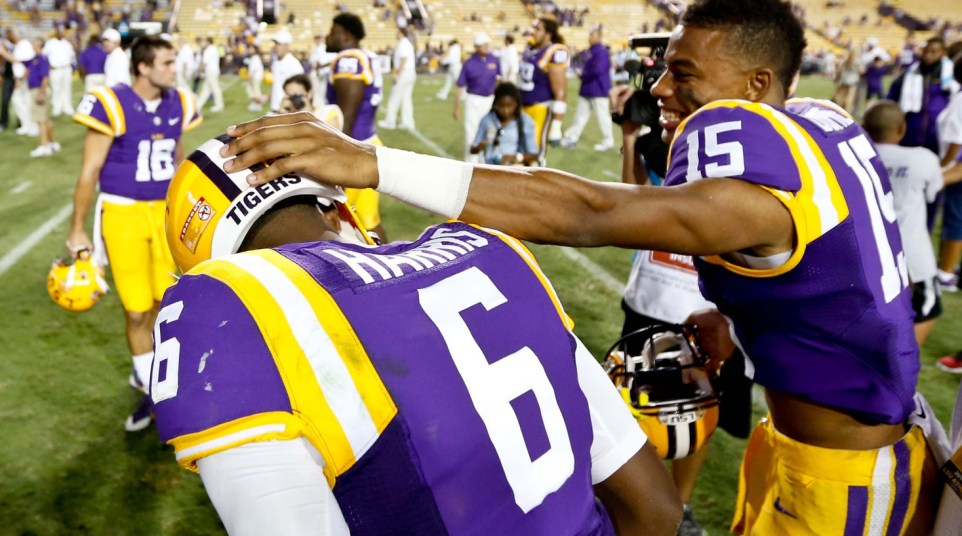Games played from LSU's 2014 recruiting class
LSU had an impressive recruiting cycle in 2014, finishing second in both the SEC and the nation in the 247sports industry composite rankings, behind only Alabama.
How much did the Tigers get out of its 27 signees from a year ago?
| Player | Position | Starts | Games Played |
|---|---|---|---|
| Leonard Fournette | RB | 6 | 13 |
| Malachi Dupre | WR | 2 | 12 |
| Clifton Garrett | LB | 0 | 3 |
| Jamal Adams | S | 2 | 13 |
| Ed Paris | S | 0 | 13 |
| Brandon Harris | QB | 1 | 8 |
| Trey Quinn | WR | 7 | 13 |
| Davon Godchaux | DT | 10 | 13 |
| Deondre Clark | DE | 0 | 12 |
| Devin Vorhees | S | 0 | 8 |
| Darrel Williams | RB | 0 | 12 |
| Jevonte Domond* | OL | 0 | 1 |
| Sione Teuhema | DE | 0 | 9 |
| John Battle | S | 0 | 1 |
| D.J. Chark | WR | 0 | 6 |
| Donnie Alexander | LB | 0 | 12 |
| Russell Gage | DB | 0 | 2 |
| Cameron Gamble | K | 0 | 7 |
| Collin Jeter | TE | 0 | 11 |
*Denotes junior college transfer
In all, LSU got 169 games out of 19 true freshmen that saw the field, as well as 28 total starts.
Leonard Fournette was the player who garnered the most attention. As a true freshman in a loaded backfield, the No. 1 overall player in the class of 2014 led LSU in carries, rushing yards and rushing touchdowns. He also handled the bulk of kick return duties, averaging 26 yards per return with one touchdown. Fournette took over the starting running back role midseason and put together a very strong campaign, setting LSU’s freshman rushing record.
Perhaps the most vital player in the freshman class was defensive tackle Davon Godchaux. When Quentin Thomas was unable to go with an arm injury early in the year, Godchaux stepped into the starting lineup and never relinquished his spot. He improved rapidly as the season progressed, helping to shore up a run defense that was ravaged early in the year.
Several other freshmen made an impact on offense. Despite a nearly non-existent passing attack, both Trey Quinn and Malachi Dupre found themselves on the field quite a bit. Dupre seemed frustrated by a lack of targets late in the season after a few impressive outings, mostly with Brandon Harris playing in relief. Quinn had a few strong games, but also had issues with drops late in the season.
Of course, many called for Harris to take the reins of the offense. He looked good in several relief efforts, but stumbled in his only start of the season on the road at Auburn. He did not play any meaningful snaps after that game and didn’t get on the field at all in LSU’s final three games. He is expected to compete for the starting role in 2015.
Darrel Williams was used inconsistently, but showed promise as a between-the-tackles runner for the Tigers. He took handoffs as both as a halfback and fullback, punishing tackles along the way. He finished fourth on the Tigers in rushing and scored three touchdowns.
On defense, Jamal Adams was a bundle of football joy flying around in the secondary. His playing time increased when fellow defensive back Dwayne Thomas was lost for the season, and he made the most of his opportunity. Adams finished sixth on the team in total tackles and fifth in tackles for loss, leading LSU’s defensive backs in the latter category.

